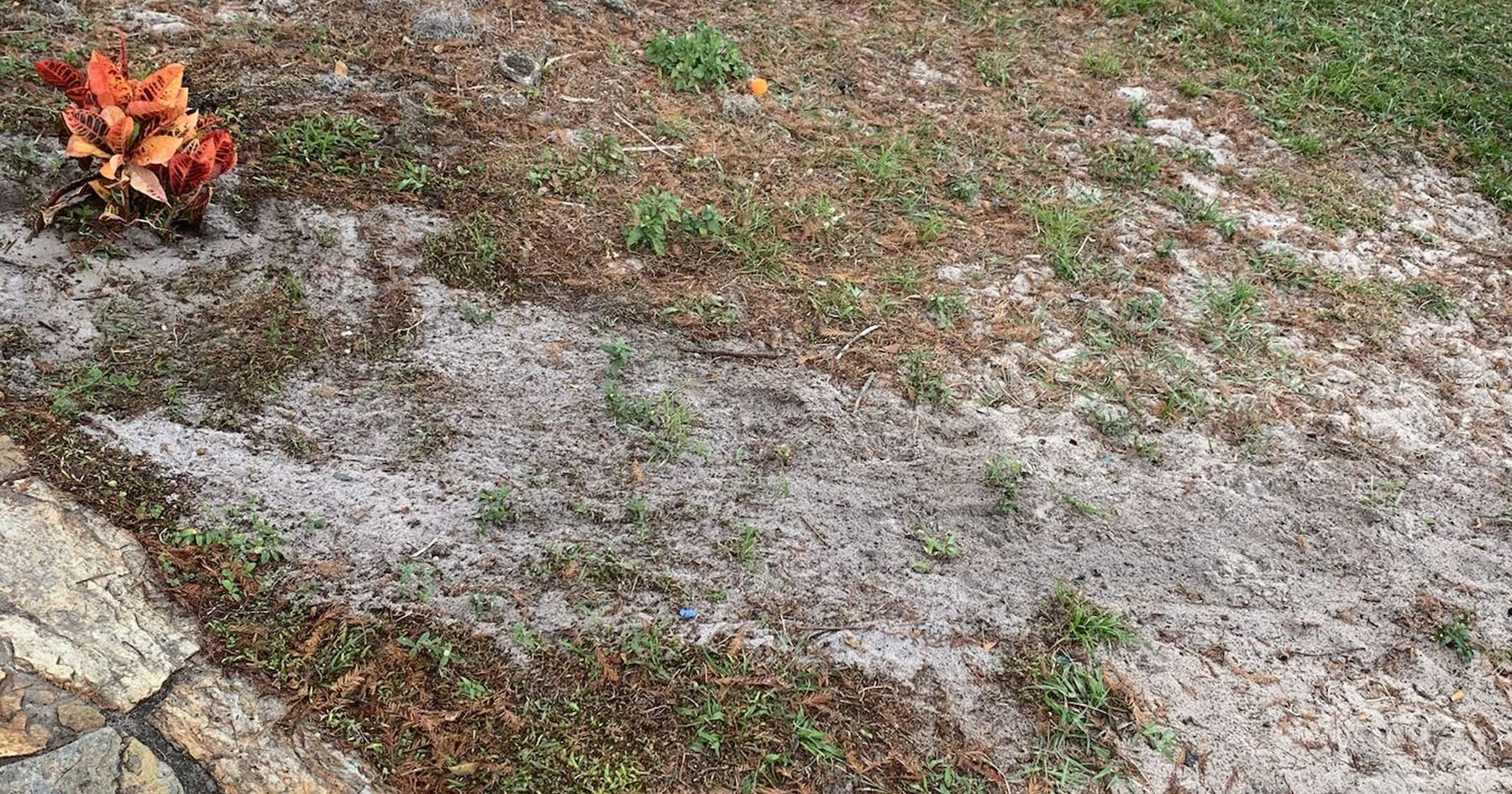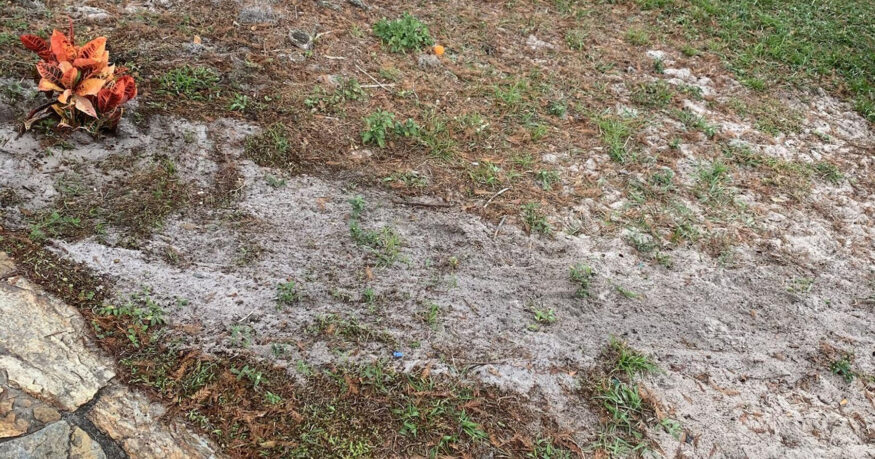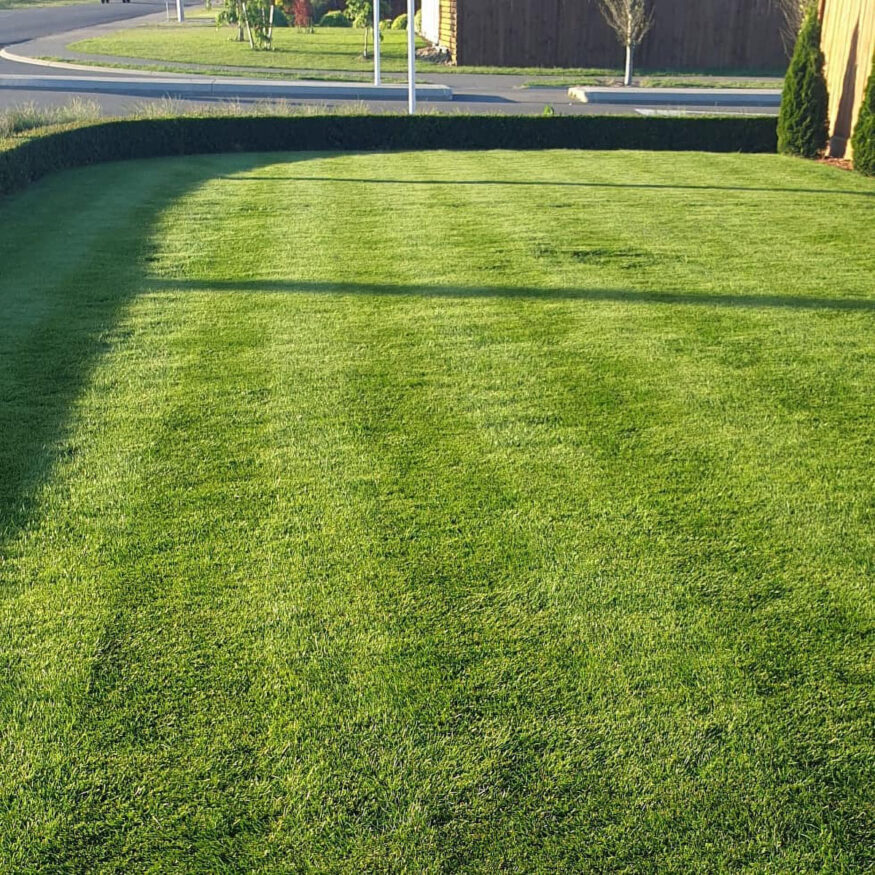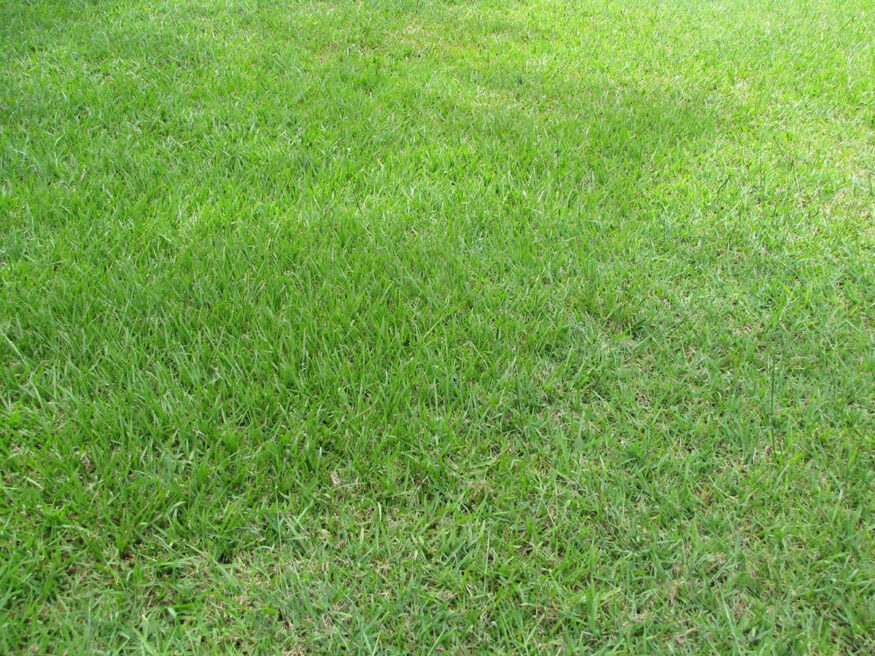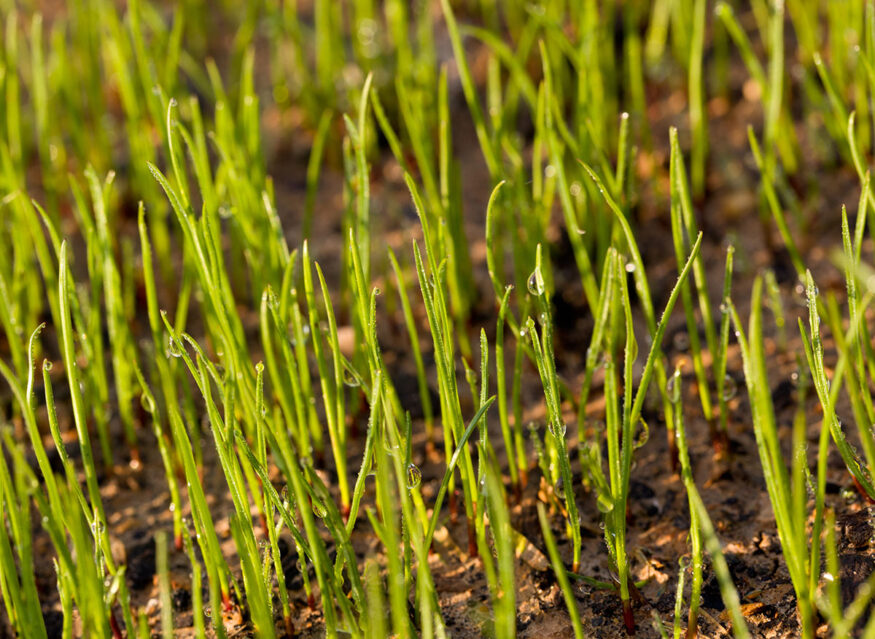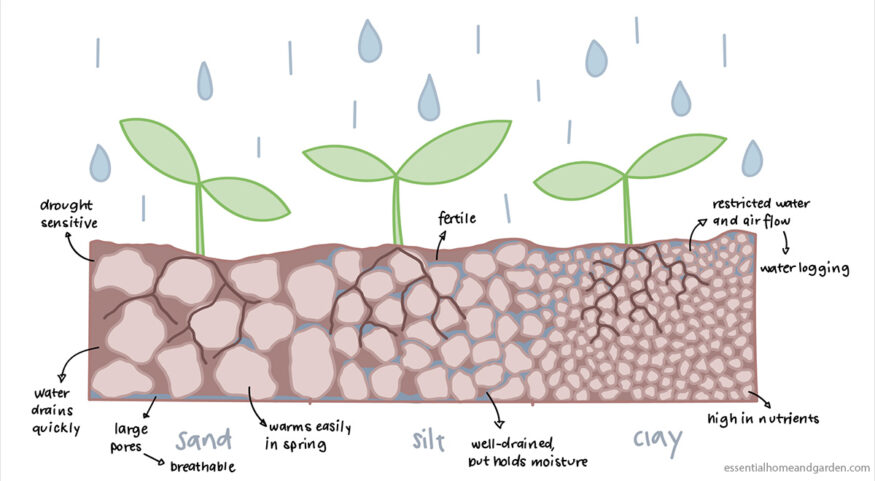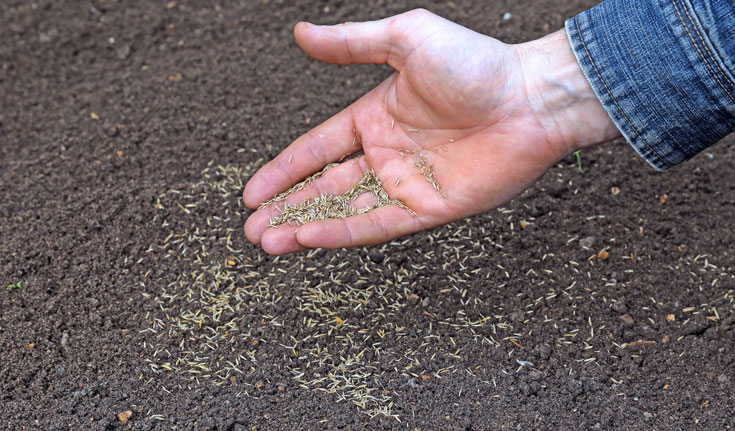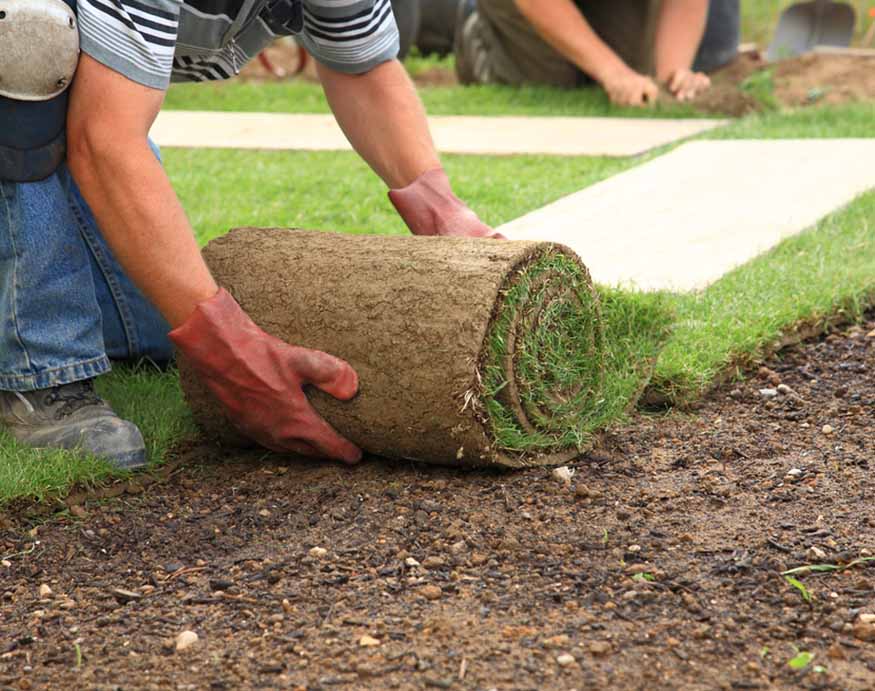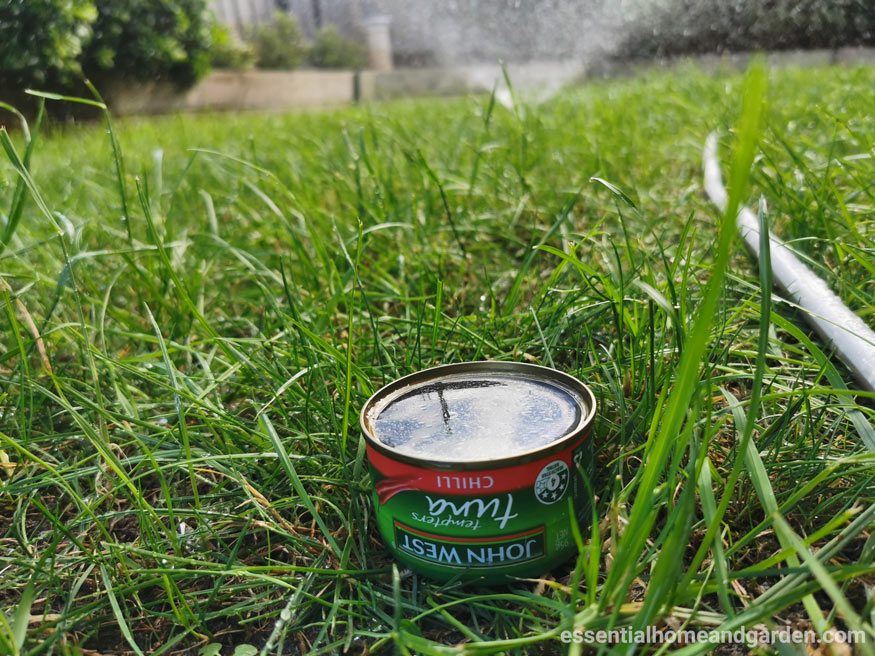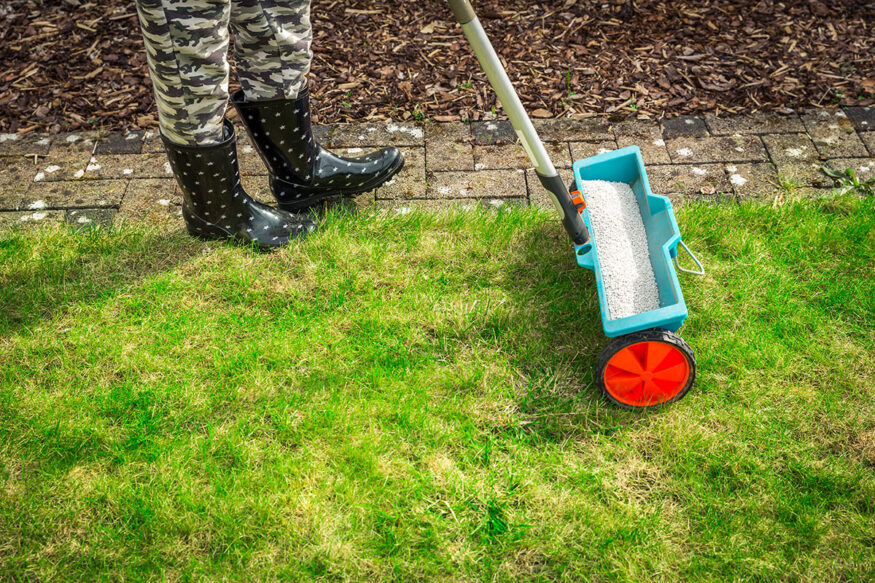Finding the perfect grass seed to thrive in sandy soil can feel like a daunting task. From root depth preferences to tolerance for heat, foot traffic, and drought, numerous factors are in play. How does one sift through these choices to sow the ideal green canvas? Luckily, we’ve got good news for you – the heavy-lifting has been done!
So which is the best grass seed type for sandy soil? Tall fescue, zoysia, Bermudagrass, centipede, and bahiagrass all have important characteristics which allow them to grow well in sandy soil.
Each of these grass seed varieties has unique traits, with some lauded for their fast germination and adaptability in numerous climates, while others earn praise for their immense drought tolerance, deep root systems, or high foot traffic resistance.
Want to know which of these grasses is the easiest to maintain and why? Don’t stop reading now! We’re about to dig deeper into low-maintenance lawn care.
[ez-toc]
The Best Grass Types For Sandy Soil
Use this handy summary table to get a quick look at at each grass type, read on for all the important details.
| Grass Type | Key Characteristics | Ideal Climate | Maintenance | Root System | Shade Tolerance |
|---|---|---|---|---|---|
| Fescue Grass | Cold and shade tolerant | Cooler climates | Low maintenance | Deep root system | Partial shade |
| Centipede Grass | Shallow root system | Hot, humid climates | Low maintenance | Shallow stolons | Sun-loving |
| Zoysia Grass | Deep root system | Warm, dry conditions | Moderate maintenance | Deep root system | Shade tolerant |
| Bahia Grass | Deep root system | Hot coastal regions | Low maintenance | Deep root system | Sun-loving |
| Bermudagrass Seed | Deep-rooted, drought-tolerant | Hot, sunny areas | Moderate maintenance | Deep root system | Sun-loving |
Fescue Grass Seed
| Also Known As | Lolium arundinaceum (formerly Festuca arundinacea) |
| Type of Grass | Cool season perennial |
| Optimal Zones | Northern through transition zones |
| Root Structure | Deep |
| Winter Hardiness | Excellent |
| Shade Tolerance | High |
| Water Requirements | Medium to High |
| Drought Tolerance | Excellent |
| Self Repair Capacity | Limited |
| Overall Maintenance Requirements | Low |
Fescues are a genius of lawn-like and clumping grasses that are more tolerant of cold and shade tolerant than other sand-loving varieties.
All fescues have a deep root system and require little maintenance or fertilization to grow. They prefer cooler climates and partial shade. Some varieties will not grow at all in hot climates.
There are multiple varieties of fescue grass seed such as tall fescue and fine fescues that do well in sandy soils, each offering something a little different.
Hard fescue is a common fine fescue grass seed that is exceptionally hardy in cold climates. It is drought tolerant and does not require much mowing or fertilizing. However, it is a cold season grass and cannot survive in overly hot regions.
Creeping red fescue grass seed is another fine fescue commonly used for lawns. It is especially well-adapted to grow in fast-draining, pebbly soil. As long as it doesn’t receive a lot of direct sunlight, it can be grown in hotter climates and is the perfect low maintenance lawn for sandy soil within shady yards.
Tall fescue has thicker, more traditional-looking blades than the two fine fescues mentioned above and makes an excellent choice for lawns. Tall fescue tends to grow in clumps and requires some extra attention to spread seeds evenly enough to encourage a more uniform look. But Tall fescue is worth the extra effort for sandy yards with a mix of sun and shade.
Check out these two Tall Fescue options that we have had good results with:
- Pennington The Rebels Tall Fescue Grass Seed Mix
- Premium Oregon Grown Kentucky 31 Tall Fescue Grass Seed
Here are two recommended Fine Fescue grass seed options:
If shade is more of an issue for your lawn than sandy soil, you may want to take a look at our article on the best grass for shade.
Centipede Grass
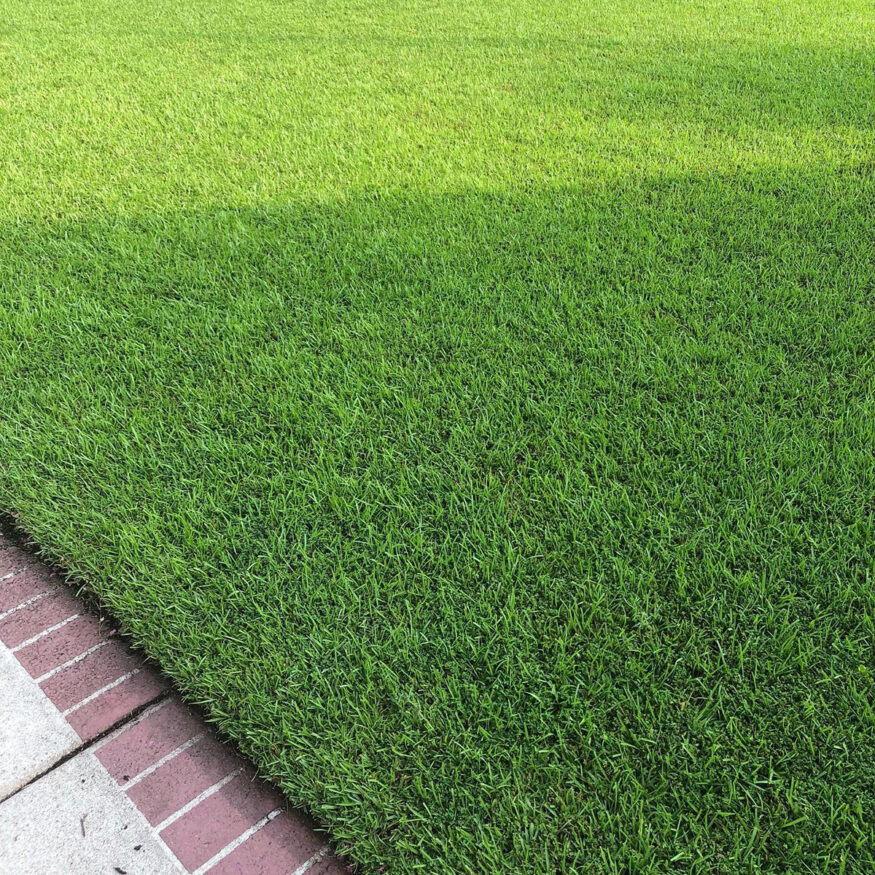 Source: trooperbob_sc on Instagram
PIN IT
Source: trooperbob_sc on Instagram
PIN IT
| Also Known As | Lazy man’s grass; Eremochloa ophiuroides |
| Type of Grass | Warm season perennial |
| Optimal Zones | 7 – 10, South Eastern US; Hawaii |
| Root Structure | Shallow |
| Winter hardiness | Very poor |
| Heat tolerance | Excellent |
| Shade tolerance | Fair |
| Water Requirements | Moderate to High |
| Drought Tolerance | Moderate to High |
| Self Repair Capacity | Poor |
| Overall Maintenance Requirements | Low |
Centipede grass is an exception to the rule that grass needs to have a deep root system to be grow well in sandy soil.
This unique type of Eremochloa has an exceptionally shallow root system. And instead of spreading via an underground rhizome, it spreads using above-ground stolons.
These stolons create thick carpet-like sod. Because of this, the unstable structure of sandy soil does not affect well-established centipede grass. It also allows the grass to trap more nutrients and moisture at the soil level before it has a chance to drain away.
Still, this grass seed needs more water than many other varieties on this list. It is also less hardy and can only survive light frosts.
Centipede grass seed is perfectly suited for hot, humid climates and yards that get a lot of sun.
It is slow-growing and requires infrequent mowing and little maintenance or fertilization in the right climate. It has a pleasant light to medium green color and lush, thick texture.
This grass is most commonly found in the Southeastern United States and Hawaii and is widely considered to be one of the best grass seeds for sandy soil.
Our recommendations for Centipede grass seed are:
Zoysia Grass
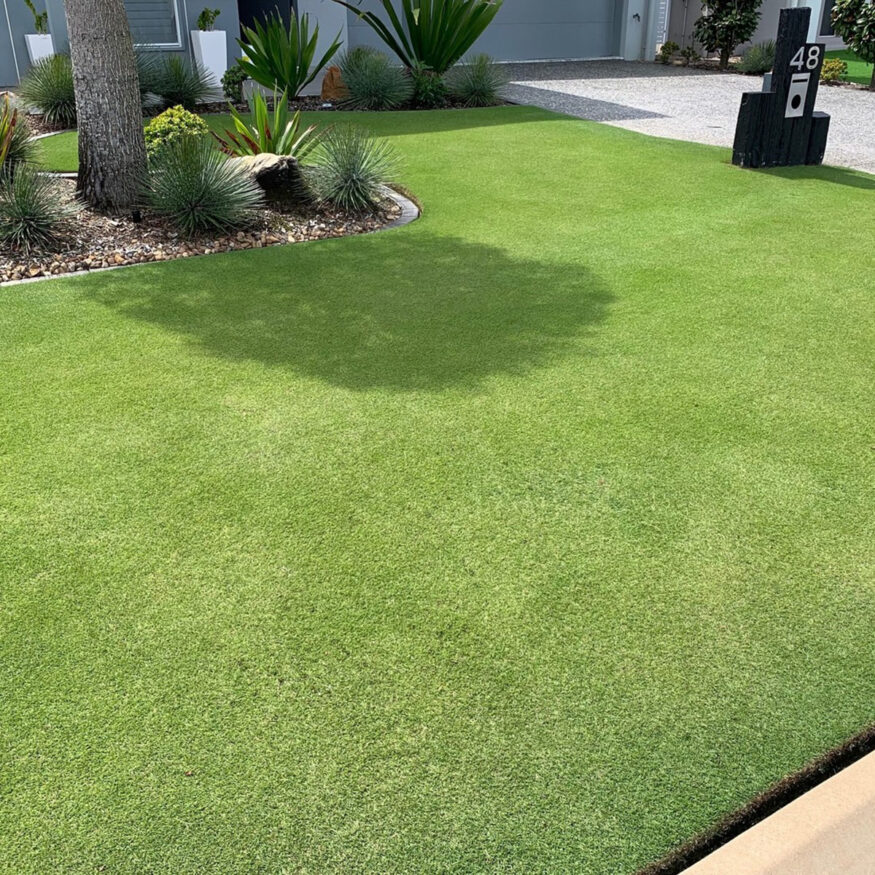 Source: lawnsolutions on Instagram
PIN IT
Source: lawnsolutions on Instagram
PIN IT
| Also Known As | Zoysiagrass; Zoysia sp. |
| Type of Grass | Warm season perennial |
| Optimal Zones | Southern through warmer transition zones |
| Root Structure | Shallow to medium |
| Winter hardiness | Good |
| Heat tolerance | Excellent |
| Shade tolerance | Partial |
| Water Requirements | Medium |
| Drought Tolerance | Good |
| Self Repair Capacity | Low |
| Overall Maintenance Requirements | Moderate |
When it comes to heat-hardy sandy soil grass seed, zoysia grass tops the list. This genus of warm-season grass contains multiple varieties capable of producing deep root systems that allow them to survive in very dry conditions. They are also more tolerant of cold than others we’ve looked at so far.
The deep root system, a tendency to form dense carpets of sod, and a low nutrient need make zoysia grasses perfect for sandy soils. They have a slightly higher shade tolerance than many sun-loving kinds of grass but still do well in direct sun and high heat.
These are one of the best grasses to grow for sand and will remain green through mild drought but will turn a straw-like yellow during exceptionally dry periods and winter. They quickly green back up once temperatures rise or water is applied.
Zoysia grass seed is highly adaptable and grow well across the Southern United States up through the Transition Zone.
Unlike Bermuda grass seed, this grass type is slow-growing and needs time to establish those deep roots. In sandy soil, this means more care and attention upfront. But once matured, these grasses require infrequent mowing, only twice-yearly fertilizing, and relatively little water.
Bahia Grass
| Also Known As | Bahia Grass; Paspalum notatum Flugge |
| Type of Grass | Warm season perennial |
| Optimal Zones | Deep southeast |
| Root Structure | Deep |
| Winter hardiness | Poor to Fair |
| Heat tolerance | Excellent |
| Shade tolerance | Fair |
| Water Requirements | Low to Moderate |
| Drought Tolerance | Good |
| Self Repair Capacity | Low |
| Overall Maintenance Requirements | Low |
Bahiagrass seed is another warm-season grass and is less common in the United States, but is well suited to a few very specific areas. Within these regions, it is known to grow exceptionally well in sandy soil.
This grass seed is the first choice for homeowners to grow in hot environments on the coast. The deep root system and very low nutrient need allow this grass to thrive along the beach where heat, sand, and salty winds prevent other grass types from establishing.
While it is superbly built for growth in sandy soil, it does not have the rich color or thick texture of other choices. This grass grows slowly and in thinner patterning with a coarser feel.
It will turn brown in the winter but stays green longer and returns to green earlier than many warm-season kinds of grass.
While not the first choice for many, Bahiagrass is often the only choice for those with especially sandy, sun-baked yards. It is used most frequently in the Deep South and along the Southeastern coast.
Our recommended brands of Bahiagrass are:
Bermudagrass Seed
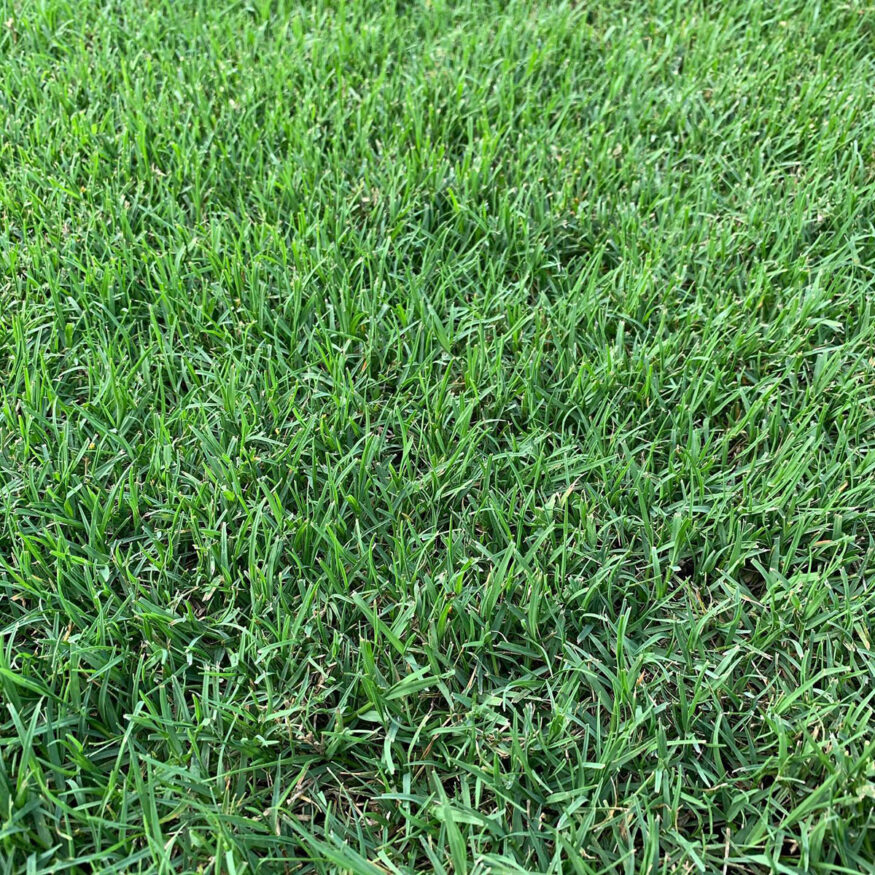 Source: sunny.bermuda on Instagram
PIN IT
Source: sunny.bermuda on Instagram
PIN IT
| Also Known As | Bermuda grass, wiregrass; Cynodon dactylon L. |
| Type of Grass | Warm season perennial |
| Optimal Zones | Southern region |
| Root Structure | Deep |
| Winter hardiness | Poor |
| Heat tolerance | Excellent |
| Shade tolerance | Poor |
| Water Requirements | High |
| Drought Tolerance | High |
| Self Repair Capacity | Excellent |
| Overall Maintenance Requirements | Moderate to High |
This variety is unlike others in the warm-season grass category in that its roots grow exceptionally deep–up to six feet in some environments. This deep rootedness combined with a high tolerance for drought makes Bermudagrass well-suited for sandy soils.
This grass prefers to grow in well-draining soil and is especially happy in areas that get long hours of direct sun.
It utilizes both above-ground stolons and below-ground rhizomes to spread. This double-action, sod-forming growth pattern makes Bermuda grass especially hardy and resilient. It can withstand a lot of foot traffic and this grass grows back quickly even after extreme stress.
Like centipede grass, bermudagrass is best for warmer climates like what is found in the Southeastern US. However, its high drought tolerance also makes it a great choice for the hot South and Southwest.
Bermuda’s deep green color remains vibrant all winter long in areas with exceptionally mild winters but will turn brown during the cold season in most climates. To keep it looking its best, you will need to fertilize this grass more often than many others on this list.
Our recommendations for Bermudagrass Seed are:
How To Grow Grass In Sandy Soil
Growing grass seed in sandy soil takes a little extra work, even choosing the right variety.
While most of the mature established forms of the grasses mentioned above require little maintenance or attention, most do need some extra help getting to that point. That attention generally comes in the form of more water and more fertilizer.
Exactly how much effort you need to put in depends on whether you choose to plant grass seed, lay sod, or use plugs. But in any case, expect to spend a significant amount of time preparing your sandy soil to give your grass the best chance at thriving.
Once your grass is established, your workload will decrease. Still, growing the perfect lawn in sandy soil will require you to pay closer attention to how often you water, when you fertilize, and how frequently you mow your grass.
Preparing Your Soil
Amending sandy soil will help add nutrients and increase its water-holding abilities to give your new lawn the best chance for success. While these changes won’t last forever or completely reverse the issues sandy soil brings, it will give your seeds or sod a better chance of surviving.
Once you have cleared the intended lawn area of rocks and debris, the first thing you want to do is add nutrients to improve soil conditions.
Since sand is low in nutrients, adding a good, rich compost or manure to the topsoil is the best way to assure your young grass gets what it needs to start growing.
Spread the compost over the entire area. Make sure to spread it a couple of inches thick, or more for very sandy soil. Then, use a tiller to mix the compost with about six inches of soil. Since sand is naturally non-compact, there is no need to till too deep.
If you live near the ocean or your soil is naturally high in salt, make sure to use only plant-based compost since these will add the least amount of extra salt to the soil.
If your soil is especially sandy and precipitation is infrequent, it may be worth mixing peat or vermiculite into the soil, as well. These additives will help trap water where your young plants can easily access it and may cut down on how often you need to water during droughts.
We have an in depth guide to soil amendments that might help with this part here.
Laying Seed
Laying grass seed is the cheapest way to start your new lawn, but it does take the longest to establish. Most grass varieties are available in seed form, but you may have to order online if you are looking for a less common variety.
In some cases, using a mix of different types of grass seed(such as warm-season and cool-season grasses or shade-loving and sun-loving varieties) might be warranted.
Use a rolling seed spreader to create even coverage (we like this mini broadcast spreader from Scotts). This is especially necessary if you are using a clumping variety like fescue. Go over each area until you have achieved the suggested level for coverage density.
Water your seeds immediately after setting it to avoid losing it all in the next big gust of wind.
Laying Sod
Laying sod gives you the satisfaction of a finished, perfect lawn in a fraction of the time compared to grass seed. But it can be much more expensive.
While almost all sand-loving grasses can be found in seed-form, it can be more difficult to find local sod in the variety you want. It is worth checking your options before deciding on this approach.
Firstly you will need tyo measure how much sod you need, you can use our calculator here to do that.
Then start by rolling out your sod against a flat edge, such as along a straight border or square patio. Continue rolling out and cutting each section to fit. Be careful not to walk on the freshly laid sod as you go.
Keep your seams tight to avoid gaps or open areas. If you do end up with a small sliver or section of raw dirt, fill it with topsoil or potting soil. Your new grass should fill in the area quickly but do make sure to pull any weeds that sprout there first.
Once your new sod is in, use a sod roller to press it firmly to the soil. This will help the roots establish quickly and avoid the sod drying out.
Allow your sod about three weeks of rest before you walk or play on it with any frequency.
Planting Grass Plugs
The third option for plating your new lawn lies somewhere in between planting grass seed and sodding.
Grass plugs are small tufts of grass that come in flats similar to other types of flowers and ground covers. They are planted in a checkerboard fashion across the dirt area you have prepared for your new lawn. Over time, the grass fills in the bare dirt by spreading outward.
Plugs are cheaper than sod but more work than seeding. They also require a bit more maintenance to keep the bare areas free of weeds while the grass slowly takes over. But, for varieties like zoysiagrass, plugs are often your best option.
Plant the plugs in a square pattern with each set 12 to 18 inches apart.
Water the plugs immediately once you are done planting. Continue to water both the plugs and the growing area around them daily until the lawn has filled in.
Watering
Newly sodded or seeded lawns need to be watered frequently, about once a day on cloudy days and up to multiple times per day during hot sunny weather.
Once your lawn has been established, though, you will need to water much less frequently.
While it is true sandy soil dries out quickly, all of the grass varieties listed here (except centipede grass) are well-adapted to dry conditions.
These deep-rooted grass varieties thrive when they receive infrequent, deep waterings. Instead of watering every day, double your watering time and set your sprinklers to only two or three times per week. You may not even have to water manually water if you live in a wet or humid climate.
If you notice your lawn drying out or going dormant, or the weather is especially hot, you may need to increase your watering frequency until conditions normalize.
Fertilizing
Just as most of the varieties listed here are drought-tolerant, most of these grasses also do well with less than ideal nutrient access. This means that you can get away with fertilizing less, but that doesn’t necessarily mean you will be breaking out the lawn feed less often.
Because nutrients get washed out of sandy soil so easily, it is better for your lawn, budget, and the surrounding environment to fertilize more frequently using smaller amounts during each application. This gives your grass plenty of opportunities to absorb nutrients without wasting a lot of fertilizer.
Using a fertilizer with slow-release nitrogen will also help assure nutrients stick around long enough for your lawn to benefit from them. If weeds are also an issue, choosing an appropriate weed and feed fertilizer will save you time and money.
Just how often and how much you need to fertilize will depend on the grass types you use, how much precipitation you receive, and just how sandy your soil is. Many of the slow-growing, hardy varieties listed above will use less overall fertilizer even in sandy soil than more common sod types will need in average soil.
You can take a lot of the heartache out of choosing a fertilizer by using a customized subscription fertilizer like Sunday Lawn Care.
Maintenance
One benefit of really sandy soil is that it tends to slow the growth of lawn which, in turn, reduces the maintenance burden.
Slow growing lawns require less mowing once they are established. This combined with a lower need for watering and fertilizing makes for a pretty easy yard to care for.
However, slow-growing lawns can be problematic during the seeding and fill-in process because they allow more time for weeds to establish. It is essential that you diligently pull and cull weeds until your lawn has filled in well.
Grass varieties that form thick sod-like carpets are less penetrable to weeds than lawns with thinner coverage. In either case, you will have to dedicate some amount of time to weeding or spraying, especially in the spring, if you want to keep your new lawn looking its best.
There are some super-hardy grass varieties that will grow quickly in sandy soil and will require more frequent mowing and edging. These types are a great choice if keeping the weeds out is more of a struggle than pulling out the mower a couple of times per week.
Follow our handy lawn maintenance schedule to keep your lawn looking great year-round.
Tips For A Great Lawn in Sandy Soil
Use Soil Amendments For Lush Grass
Amend the sandy soil by top-dressing your lawn with compost in both the spring and fall seasons. This would improve the soil’s structure and increase the nutrient content needed for healthy grass growth.
Use our in depth guide on soil amendments here.
Choose The Right Grass Seeds For Your Area
Choose the grass that is suitable for your region and conditions, regardless of the soil type.
Both the correct mowing height and appropriate watering and fertilizing are also crucial for any grass variety.
We have full guides for every state of the USA – find your state here.
Keep an Eye on Pests
Pest control is integral when cultivating new grass and managing an existing lawn in sandy soils. The porous nature of sandy soil makes it an inviting haven for harmful pests that might pose a threat to your lawn’s health.
The invasion of pests in your lawn can be subtle. Initially, you may notice areas of your lawn starting to thin out, or the grass turning brown even though it’s been properly watered. Patches of dead grass can appear, and these damaged sections might seem to grow over time. You may also see an unusual number of birds flocking to your lawn – they might be feasting on the pests.
Certain pests like grubs, which are the larvae of beetles, can undermine the root system of your grass, affecting its health and vitality. An infested grass root system may feel spongy underfoot, and the turf may peel back easily.
Incorporating regular pest control tactics is important. It not only promotes the robust growth of new grass seeds but also helps maintain the lushness of an established lawn year-round. By being vigilant about possible pest intrusions, you can protect your lawn and keep it a thriving, verdant oasis.
